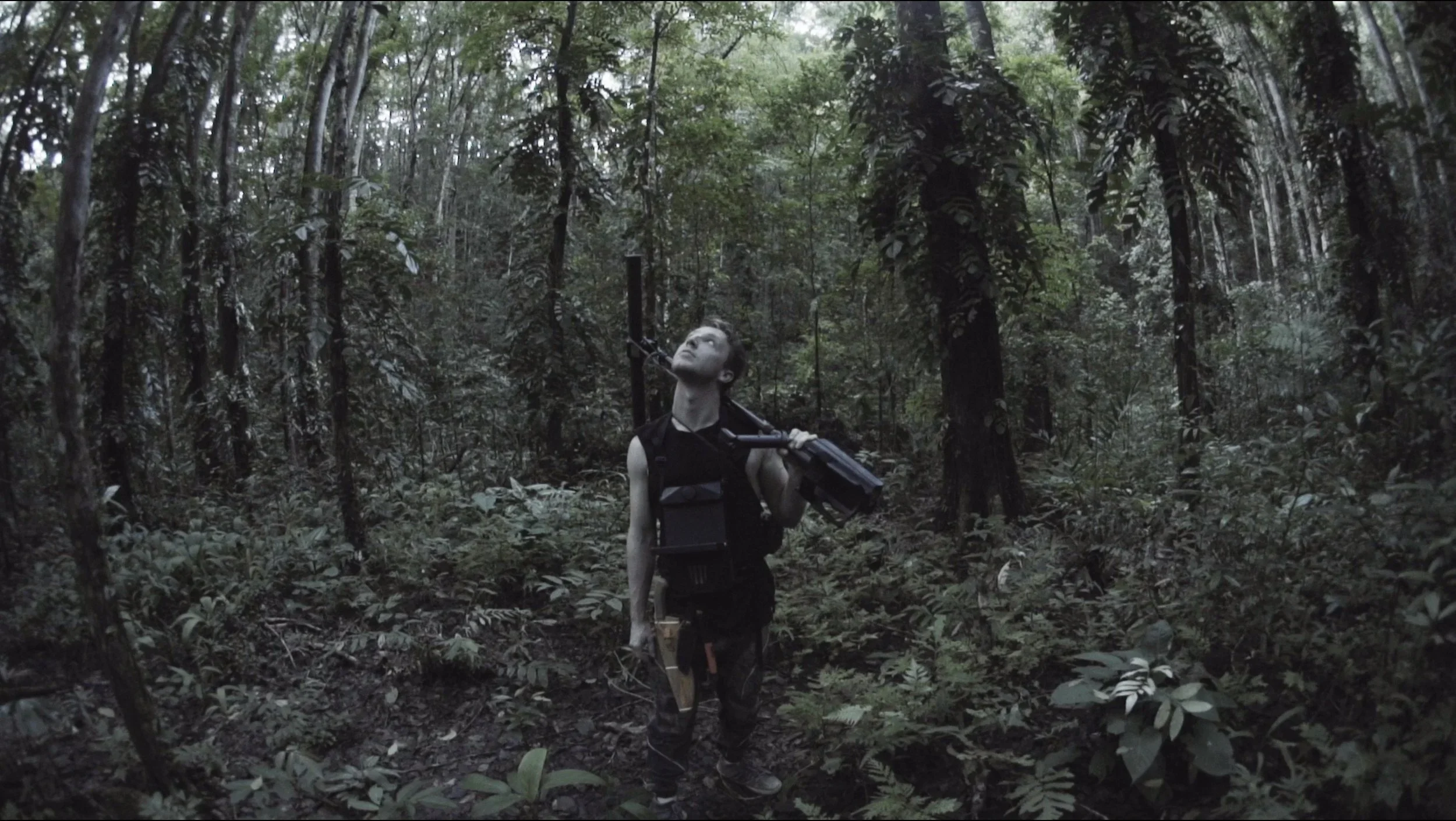‘Borderless Fog’ REVIEW: An Enduring Mystery That Calls for a Closer Look
‘Borderless Fog’ REVIEW: An Enduring Mystery That Calls for a Closer Look
A tree stands tall in the middle of a foggy forest / Still from Borderless Fog on Netflix
Mild spoilers for Borderless Fog ahead.
Edwin’s Borderless Fog opens with a gruesome mystery: a decapitated body falls onto the roof of a small canteen near the Indonesia-Malaysia border on Borneo Island. This region, home to the indigenous Dayaks, Malays, and Chinese, was the site of a deadly conflict between the joint forces of the Malaysian and Indonesian military, with the help of the local community, and the PARAKU communist forces from the late '60s until the '90s. It remains a hotbed for ethnic violence today, making such sights unfortunately common.
But what separates this incident from the usual cases of conflict in the area is the identity — or rather the identities, of the cadaver. We soon learn that the head does not belong to the body; the former belongs to a member of the Indonesian army named Thoriq, while the latter belongs to a Dayak activist named Juwing. This is particularly bizarre given that the two are on very different sides of the political spectrum.
Sanja (Putri Marino), a young, privileged but capable city cop with a questionable past, is assigned to investigate the macabre case with the support of a local Dayak officer named Thomas (Yoga Pratama). As they delve deeper, they uncover more decapitated bodies, leading them to suspect a serial killer is at work. Soon, Sanja finds herself entangled in a web of lies and conspiracy involving a child trafficking ring, forcing her to navigate a world mired in bureaucratic obstacles, border politics, and police corruption — all while confronting a dark shadow from her past.
Sanja wades through an ominous fog / Still from Borderless Fog on Netflix
Further complicating matters are rumors of a ghost named Ambong, a communist leader who escaped the military incursion at the tail-end of the 20th century. It’s said that Ambong now haunts the forests of modern-day Borneo, feeding off the traumatic memories of that conflict and fueling a never-ending cycle of violence in the present.
Out of the political chaos plaguing the island of Borneo, Indonesian filmmaker Edwin crafts an atmospheric and absorbing crime thriller that invites us to delve into the bewildering and grisly details beyond the plot’s machinations. A mood of otherworldly unease pervades the film, further blurring the line between the supernatural and reality. With the help of cinematographer Gunnar Nimpuno, Edwin captures both the haunting beauty and the sinister nuances of Borneo’s landscapes through long, lingering shots that evoke a profound sense of foreboding. This ominous tension seamlessly integrates with the mystery, to the extent that I found myself drawn to the enigma unfolding before me.
But the mystery Edwin has crafted for Sanja and Thomas is not merely a typical case to be solved in a crime thriller. Instead, it invites us to investigate the historical context — particularly during the bloody Suharto era — that has perpetuated a cycle of violence in this part of Indonesia, while also serving as a conduit for telling the often-overlooked story of the Dayak indigenous people.
Yoga Patrama as Thomas | Still from Borderless Fog on Netflix
Through Sanja, we witness the difficulties and discrimination that the Dayaks, especially the children, endure. Greedy palm plantation owners exploit their labor and encroach on their customary lands for expansion, resulting in drought, while apathetic government officials routinely dismiss their concerns, forcing them to resort to desperate measures to survive. However, this is presented only on the surface, as we view it through the eyes of someone from Jakarta. Aside from Thomas, the perspective of the indigenous people themselves is somewhat lacking in the film, which limits our understanding of the Dayaks despite the film’s sympathy towards them.
But it’s a minor casualty in an otherwise intriguing film, as it’s essentially about Sanja’s awakening to the brutal realities of the world she inhabits and the human cost of the privileges she enjoys. Throughout the film, she wears rose-colored glasses — literally and figuratively — that prevent her from seeing the harsh truths of the case before her. Our understanding of the facts relies on that glass being shattered and letting Sanja see enlightenment, but unfortunately, I found it difficult to connect with her character due to Marino's less than dynamic performance, which fails to fully convey the depth of Sanja's internal struggle.
Putri Marino as Sanja | Still from Borderless Fog on Netflix
Character issues aside, I find myself drawn to Borderless Fog due to its haunting and confounding quality, along with the air of mystery that persists in the film even after all is revealed in its epilogue. The film excels in persuading oneself into looking beyond the frames of cinema and inviting us to search for the devil in the details. Its enigmatic atmosphere and its invitation to explore the deeper, often unsettling truths of the world it portrays make it a compelling and thought-provoking experience.
Even now, days after watching the film, I still find myself humming the tune from its final moments, haunted and perplexed by its last images. It’s a film that remains in my thoughts, stubbornly persistent. It won’t be leaving me anytime soon.
Borderless Fog is now streaming on Netflix.
















